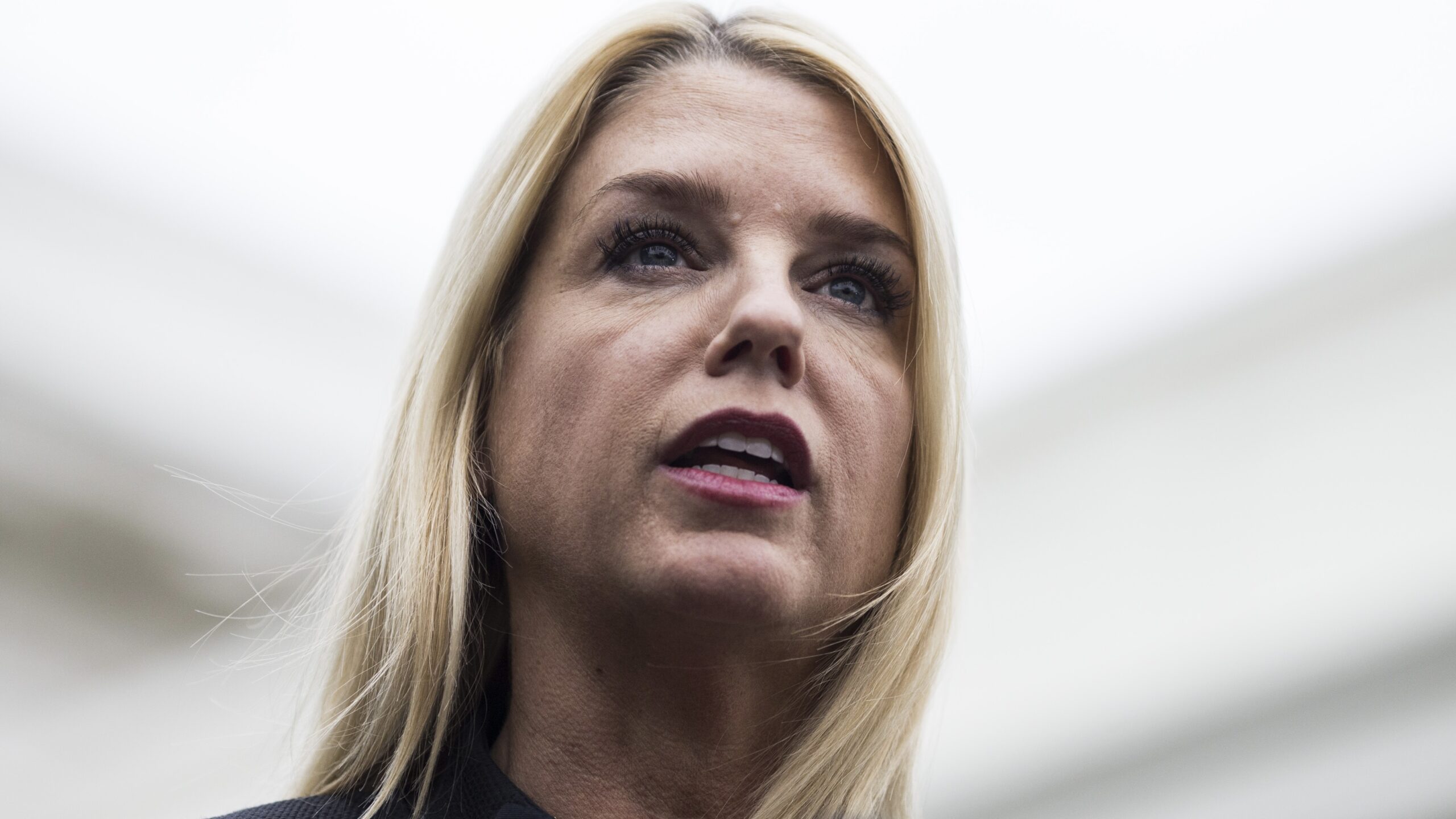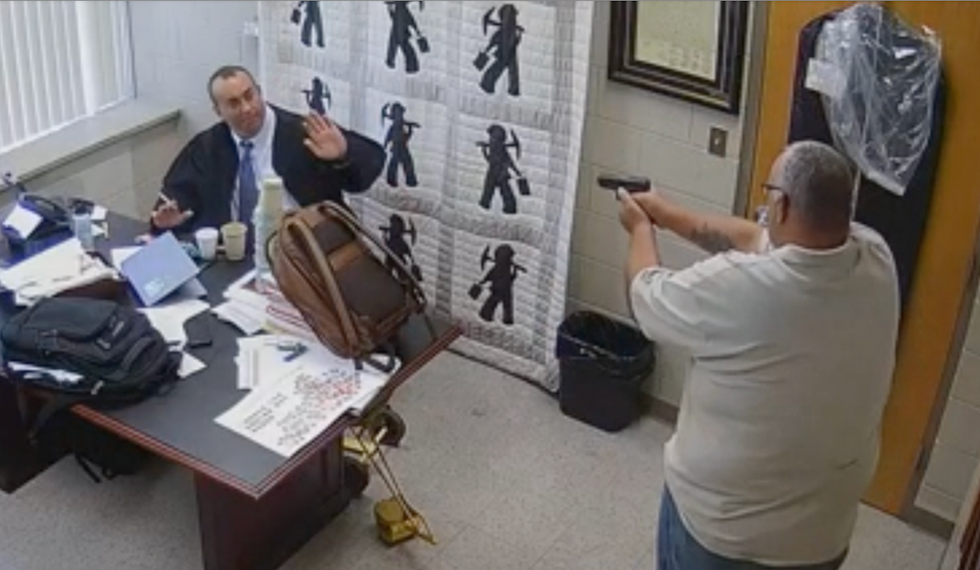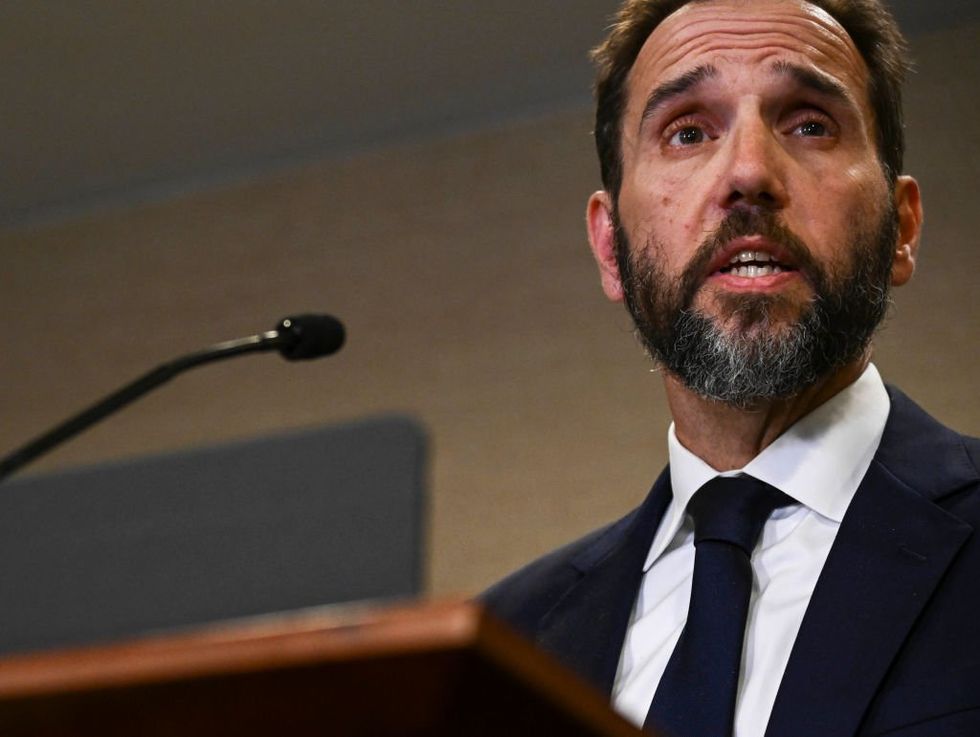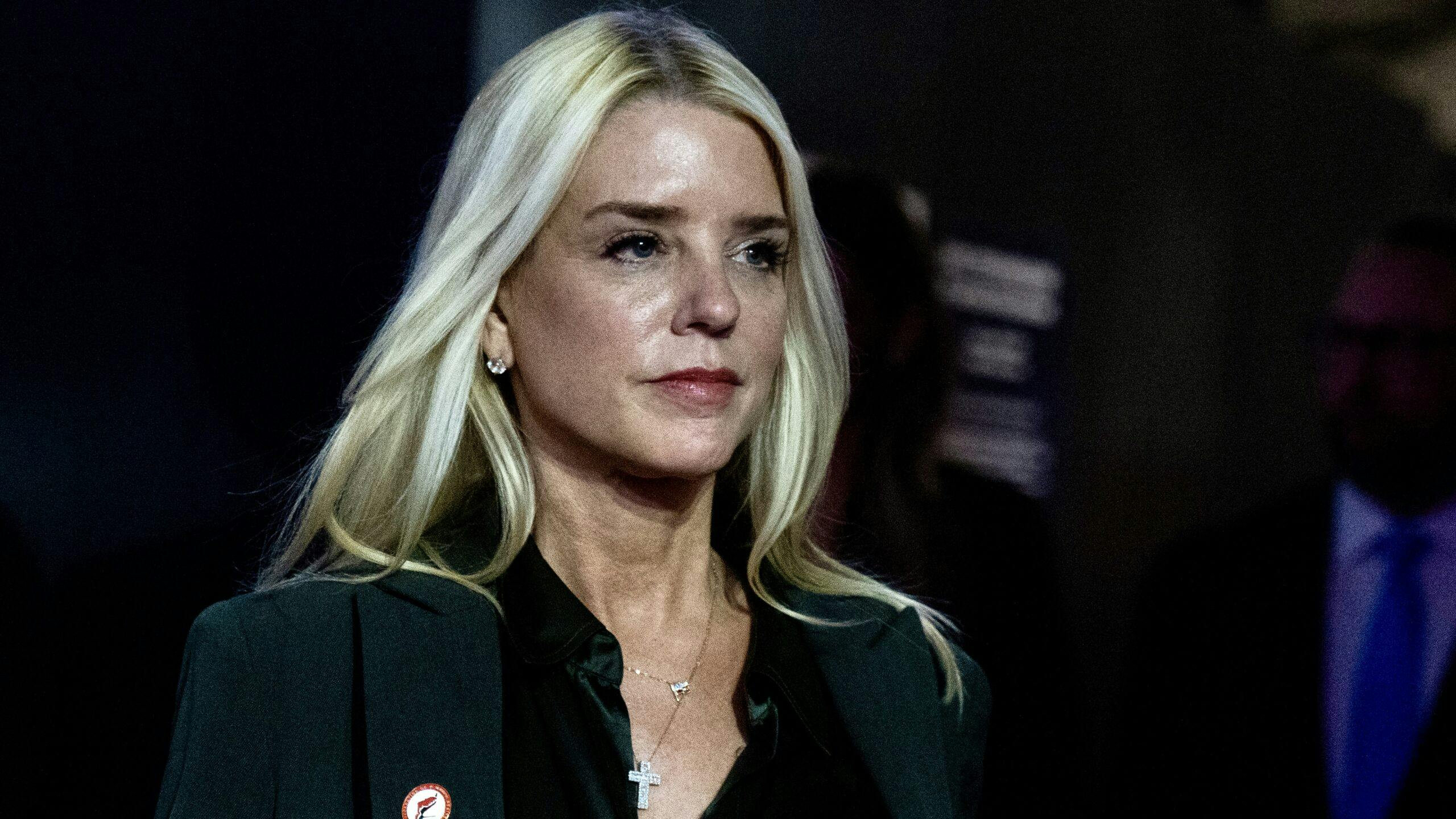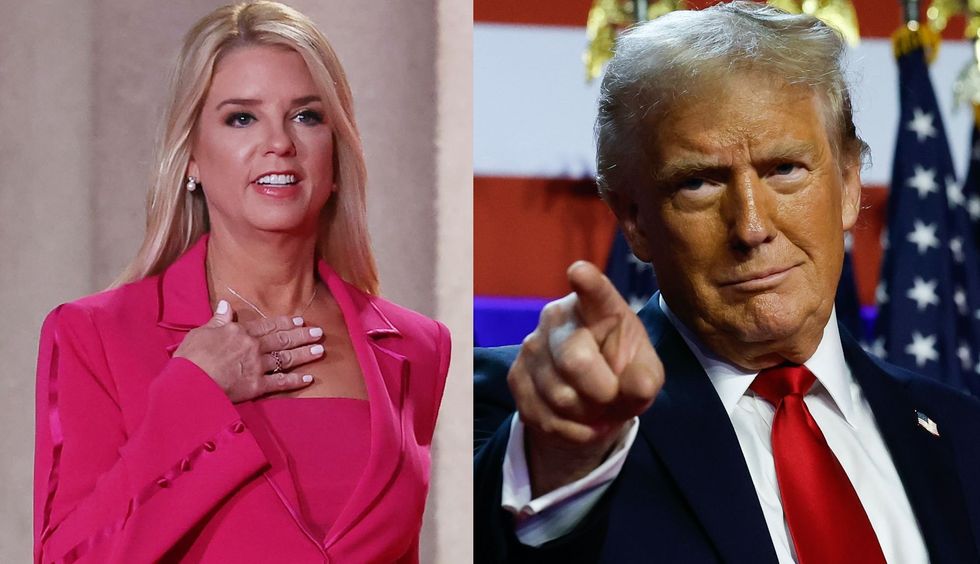3 hours, 19 minutes: This damning alternative account explains why the Pentagon dropped the ball on Jan. 6
What should have been a straightforward order for the District of Columbia National Guard to quell rioting at the U.S. Capitol on Jan. 6 turned into an hours-long debacle ensnared by concerns over “optics” and interference by Pentagon officials who were not even in the Guard’s chain of command. Those conclusions were reached by former D.C. National Guard Col. Earl G. Matthews, three additional former Guard members who testified before a U.S. House subcommittee on April 17, and a senior civilian Army official who spoke to Blaze News. They say the National Guard was wrongly blamed for the delay when it was senior Pentagon officials who interfered with the deployment and then covered up their role in the snafu in congressional testimony and accounts to the Department of Defense Inspector General. 'For the first time in its 219-year history, the DC National Guard was not allowed to respond to a riot in the city.' “There’s no reason why the Guard should not have been deployed immediately,” said Casey Wardynski, former assistant secretary of the Army for manpower and Reserve affairs. “They were both trained and equipped for it, and they were offered up ahead of time.” The career officers at the Pentagon were more concerned with politics than ensuring that the National Guard made it to the Capitol, said Wardynski, a 30-year U.S. Army veteran who served former President Donald Trump at the Pentagon from 2019 to 2021. “Instead of looking after what’s best for the country, they were looking to cover their asses and do what was best for their careers and for the perception of their favorite institution, the Army,” he said. Matthews, who served as staff judge advocate for D.C. National Guard commanding Maj. Gen. William Walker, said what played out on Jan. 6 left D.C. National Guard leaders, soldiers, and airmen dumbfounded. Four former D.C. National Guard officials, Command Sgt. Maj. Michael Brooks, Col. Earl Matthews, Brig. Gen. Aaron Dean, and Capt. Timothy Nick, testified as whistleblowers before the Committee on House Administration Subcommittee on Oversight April 17, 2024.U.S. House of Representatives “Every leader in the D.C. Guard wanted to respond and knew they could respond to the riot at the seat of government,” Matthews said. “They sat stunned watching in the Armory while for the first time in its 219-year history, the D.C. National Guard was not allowed to respond to a riot in the city.” U.S. Rep. Barry Loudermilk (R-Ga.), chairman of the Committee on House Administration Subcommittee on Oversight, said information uncovered by his investigators was ignored by the now-defunct Jan. 6 Select Committee and left out of the Pentagon inspector general report issued in November 2021. “It took too long for the D.C. National Guard to arrive at the Capitol. The 113th Wing Capital Guardians have a proud history protecting our nation’s capital and serving our nation’s leadership. Nevertheless, the New Jersey State Police from nearly 150 miles away responded to the Capitol before the D.C. National Guard.” The embarrassing three-hour abeyance saw a Guard quick-reaction force stationed just blocks away, unable to deploy while some 1,700 law enforcement officers from around the region rushed to the Capitol under a mutual-aid agreement. On one side of the issue was the U.S. Army staff at the Pentagon, whose story seemed entirely disconnected from the planning and actions of the D.C. National Guard. These officials included former Secretary of the Army Ryan McCarthy, Lt. Gen. Walter Piatt, and Gen. Charles Flynn. The D.C. National Guard — then under the command of Maj. Gen. Walker — took a completely different view, claiming the Pentagon brass were more concerned about “optics” than responding to the desperate call for help made at 1:49 p.m. by Capitol Police Chief Steven A. Sund. Wardynski said the Pentagon brass got away with blaming the D.C. National Guard. “Earl Matthews was very upset at the way the Guard got treated. The active Army tried to lay off on them that they weren’t ready. That it would take them forever to get ready,” Wardynski said. “That’s not my impression at all. I think they were ready and ready to go, and they were trained to have a good idea of what they’d be doing. But the Guard kind of comes in for lumps. They got away with making the Guard look bad.” 'Pelosi will never go for it.' Walker said the request for help was very clear. “At 1:49 p.m. I received a frantic call from then Chief of U.S. Capitol Police Steven Sund, where he informed me that the security perimeter at the Capitol had been breached by hostile rioters,” Walker testified in a 2021 Senate hearing. “Chief Sund, his voice cracking with emotion, indicated that there was a dire emergency on Capitol Hill and requested the immediate assistance of as many Guardsmen as I could muster.” No matter who was at fault, however, the result was likely the same. Sund was denied the assistance of hund
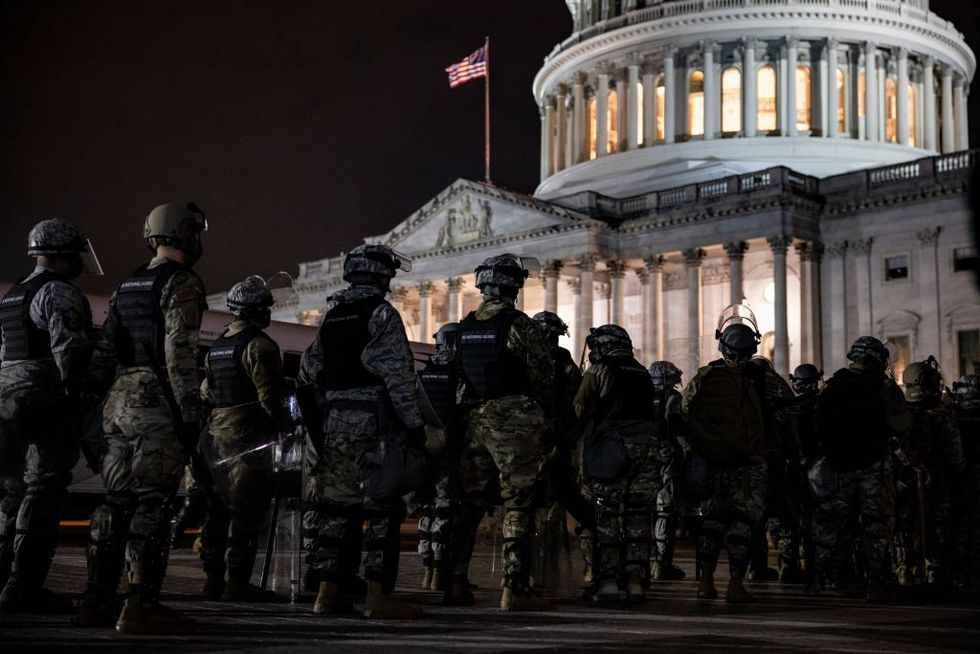

What should have been a straightforward order for the District of Columbia National Guard to quell rioting at the U.S. Capitol on Jan. 6 turned into an hours-long debacle ensnared by concerns over “optics” and interference by Pentagon officials who were not even in the Guard’s chain of command.
Those conclusions were reached by former D.C. National Guard Col. Earl G. Matthews, three additional former Guard members who testified before a U.S. House subcommittee on April 17, and a senior civilian Army official who spoke to Blaze News.
They say the National Guard was wrongly blamed for the delay when it was senior Pentagon officials who interfered with the deployment and then covered up their role in the snafu in congressional testimony and accounts to the Department of Defense Inspector General.
'For the first time in its 219-year history, the DC National Guard was not allowed to respond to a riot in the city.'
“There’s no reason why the Guard should not have been deployed immediately,” said Casey Wardynski, former assistant secretary of the Army for manpower and Reserve affairs. “They were both trained and equipped for it, and they were offered up ahead of time.”
The career officers at the Pentagon were more concerned with politics than ensuring that the National Guard made it to the Capitol, said Wardynski, a 30-year U.S. Army veteran who served former President Donald Trump at the Pentagon from 2019 to 2021.
“Instead of looking after what’s best for the country, they were looking to cover their asses and do what was best for their careers and for the perception of their favorite institution, the Army,” he said.
Matthews, who served as staff judge advocate for D.C. National Guard commanding Maj. Gen. William Walker, said what played out on Jan. 6 left D.C. National Guard leaders, soldiers, and airmen dumbfounded.
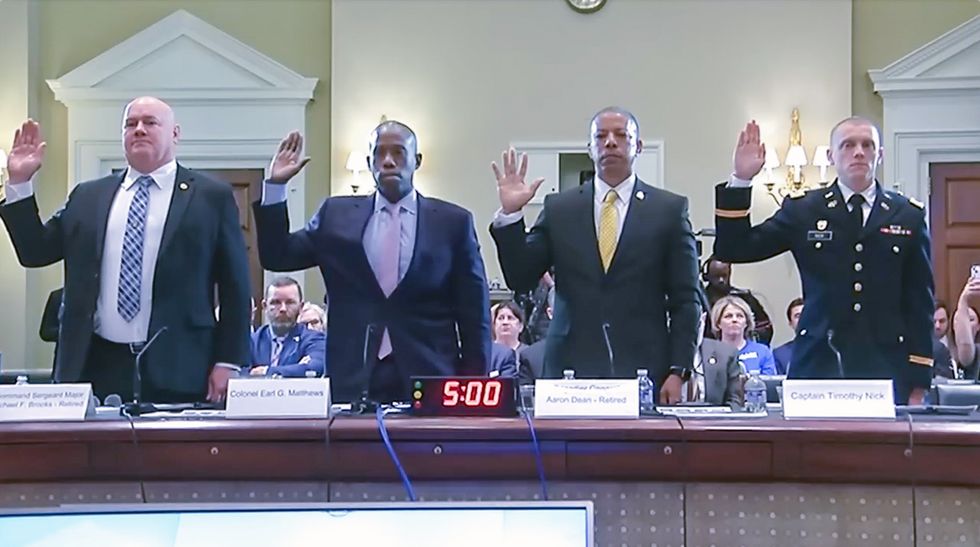 Four former D.C. National Guard officials, Command Sgt. Maj. Michael Brooks, Col. Earl Matthews, Brig. Gen. Aaron Dean, and Capt. Timothy Nick, testified as whistleblowers before the Committee on House Administration Subcommittee on Oversight April 17, 2024.U.S. House of Representatives
Four former D.C. National Guard officials, Command Sgt. Maj. Michael Brooks, Col. Earl Matthews, Brig. Gen. Aaron Dean, and Capt. Timothy Nick, testified as whistleblowers before the Committee on House Administration Subcommittee on Oversight April 17, 2024.U.S. House of Representatives
“Every leader in the D.C. Guard wanted to respond and knew they could respond to the riot at the seat of government,” Matthews said. “They sat stunned watching in the Armory while for the first time in its 219-year history, the D.C. National Guard was not allowed to respond to a riot in the city.”
U.S. Rep. Barry Loudermilk (R-Ga.), chairman of the Committee on House Administration Subcommittee on Oversight, said information uncovered by his investigators was ignored by the now-defunct Jan. 6 Select Committee and left out of the Pentagon inspector general report issued in November 2021.
“It took too long for the D.C. National Guard to arrive at the Capitol. The 113th Wing Capital Guardians have a proud history protecting our nation’s capital and serving our nation’s leadership. Nevertheless, the New Jersey State Police from nearly 150 miles away responded to the Capitol before the D.C. National Guard.”
The embarrassing three-hour abeyance saw a Guard quick-reaction force stationed just blocks away, unable to deploy while some 1,700 law enforcement officers from around the region rushed to the Capitol under a mutual-aid agreement.
On one side of the issue was the U.S. Army staff at the Pentagon, whose story seemed entirely disconnected from the planning and actions of the D.C. National Guard. These officials included former Secretary of the Army Ryan McCarthy, Lt. Gen. Walter Piatt, and Gen. Charles Flynn.
The D.C. National Guard — then under the command of Maj. Gen. Walker — took a completely different view, claiming the Pentagon brass were more concerned about “optics” than responding to the desperate call for help made at 1:49 p.m. by Capitol Police Chief Steven A. Sund.
Wardynski said the Pentagon brass got away with blaming the D.C. National Guard.
“Earl Matthews was very upset at the way the Guard got treated. The active Army tried to lay off on them that they weren’t ready. That it would take them forever to get ready,” Wardynski said. “That’s not my impression at all. I think they were ready and ready to go, and they were trained to have a good idea of what they’d be doing. But the Guard kind of comes in for lumps. They got away with making the Guard look bad.”
'Pelosi will never go for it.'
Walker said the request for help was very clear.
“At 1:49 p.m. I received a frantic call from then Chief of U.S. Capitol Police Steven Sund, where he informed me that the security perimeter at the Capitol had been breached by hostile rioters,” Walker testified in a 2021 Senate hearing. “Chief Sund, his voice cracking with emotion, indicated that there was a dire emergency on Capitol Hill and requested the immediate assistance of as many Guardsmen as I could muster.”
No matter who was at fault, however, the result was likely the same. Sund was denied the assistance of hundreds of riot-gear-clad Guardsmen during the time the Capitol was overrun and a 35-year-old San Diego woman was shot to death by Lt. Michael Byrd near the House of Representatives.
Sund said the response to his urgent request for help was “absolutely abysmal,” noting that by the time Guard members arrived at the staging location near the Capitol, they were no longer needed.
“They could have not shown up and it wouldn't have changed a thing,” Sund told Blaze News.
Sund added that the blame for that does not lie with the men and women who were sitting on buses ready to deploy once authorization came through. As the soldiers and airmen got off of their buses at Lot 16 at dusk on Jan. 6, they were “damned near in tears," Sund said, “because they could have made a difference if sent sooner.”
The Guard-Pentagon saga that played out over several hours on Jan. 6 was in addition to the resistance Sund encountered earlier that day and in the days leading up to Jan. 6.
The House and Senate sergeants at arms refused Sund's Jan. 3 request for National Guard help because, as one said, “Pelosi will never go for it.”
The role of former House Speaker Nancy Pelosi (D-Calif.) came into sharper focus in recent weeks after the U.S. House released more video of her shot for the HBO documentary, “Pelosi in the House.”
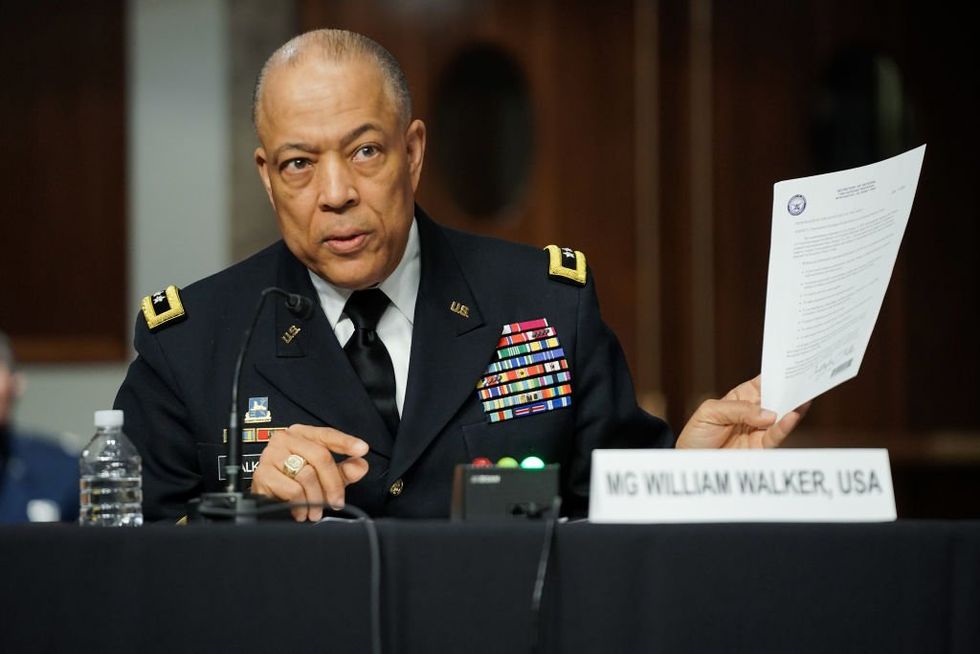 Maj. Gen. William J. Walker, then commander of the DC National Guard, testifies before a US Senate hearing on March 3, 2021, in Washington, DC.Photo by Greg Nash-Pool/Getty Images
Maj. Gen. William J. Walker, then commander of the DC National Guard, testifies before a US Senate hearing on March 3, 2021, in Washington, DC.Photo by Greg Nash-Pool/Getty Images
In the eye-opening video clips, Pelosi blamed herself for the Capitol not having National Guard coverage on Jan. 6 — “I take the full responsibility” — a stark contrast from her public statements across more than 44 months.
“I am stunned by the repeated statements by Pelosi about there not being any National Guard deployed to the Capitol in advance of the attack on January 6,” Sund told Blaze News Aug. 29, “when it was her sergeant at arms for the House of Representatives who denied my request for support on January 3, and then again repeatedly for 71 minutes while we were under attack on January 6.”
The House sergeant at arms is appointed by and reports to the speaker. Under rules in force at the time, the police chief could not even request National Guard help without permission from the Capitol Police Board. Voting members of the board include the House and Senate sergeants at arms and the architect of the Capitol. Sund was an ex-officio member.
Sund’s initial request to House Sergeant at Arms Paul Irving and the Capitol Police Board for National Guard help was made at 1:09 p.m. on Jan. 6. Sund said he made repeated calls to Irving for updates and was told a decision was forthcoming. Pelosi did approve Irving’s request to go to the Pentagon for Guard help. That decision was relayed to Sund from the Police Board at 2:10 p.m., three minutes before the Capitol was breached at the Senate wing door entrance.
Key meetings aired Pentagon misgivings
Two virtual meetings loomed large in the saga once Sund’s request for the Guard landed at the Pentagon.
On a conference call that ran from 2:30 to 2:55 p.m., Piatt and Flynn expressed reservations about the Guard being sent to the Capitol, according to notes kept by Col. Matthews and Capt. Timothy Nick, aide de camp for Walker on Jan. 6.
“Both LTGs Piatt and Flynn stated that the optics of having uniformed military personnel deployed to the U.S. Capitol would not be good,” the Matthews report said.
Wardynski said he wanted to know where McCarthy was. “And somewhere early on, I said, ‘Where's the secretary of the Army?’ And the answer was, ‘He’s left the building with his security detail. And he’s kind of out of touch.’ And I'm like, ‘Well, that's not great.’”
Wardynski said the Pentagon officers didn’t like the optics.
“Optics were a big thing to these guys. They didn’t like the optics of the Army being involved, and I remember thinking to myself, ‘This isn’t a military thing, and your best military advice isn’t worth a damn thing right here. This is civilian, this is political.’”
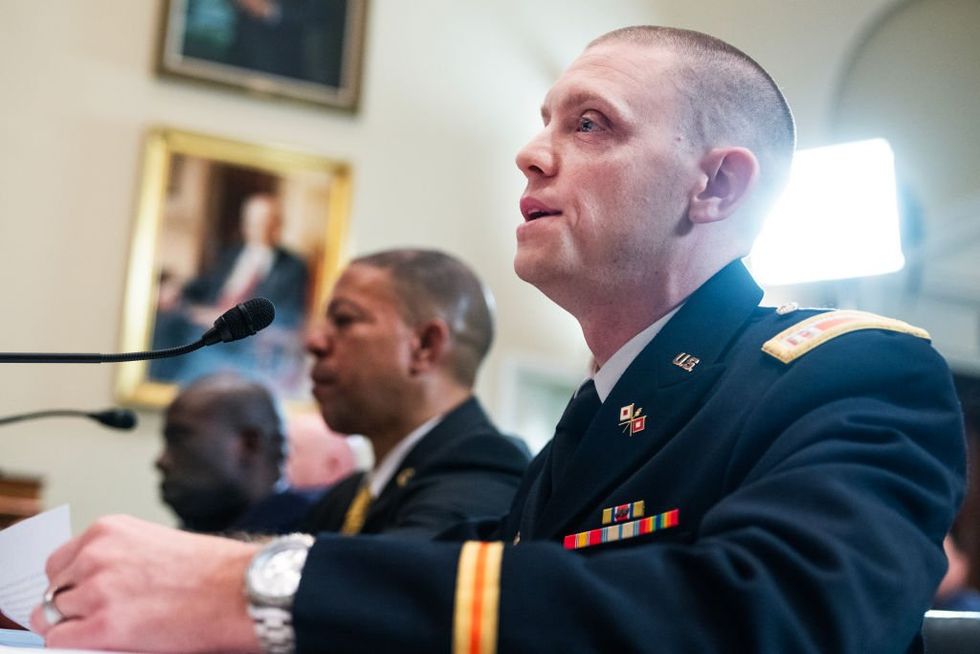 Capt. Timothy Nick, who served as aide de camp to Maj. Gen. William Walker on Jan. 6, 2021, testifies before the Committee on House Administration Subcommittee on Oversight on April 17, 2024.Tom Williams/CQ-Roll Call Inc. via Getty Images
Capt. Timothy Nick, who served as aide de camp to Maj. Gen. William Walker on Jan. 6, 2021, testifies before the Committee on House Administration Subcommittee on Oversight on April 17, 2024.Tom Williams/CQ-Roll Call Inc. via Getty Images
“They were worried about ‘cosmetics and optics and appearances’ and things like that. And you know, that's not really a military thing,” Wardynski said. “Military things are like: What’s the right force, what are the rules of engagement, what task force are we putting together? Who are they going to collaborate with? The Guard, with police or federal or whatever the hell. Those are military questions. We weren’t asking any military questions.”
The resistance from the Pentagon angered Metropolitan Police Department Chief Robert Contee, who threatened to go public, Matthews reported.
“Chief Contee then stated that he would inform the mayor [D.C. Mayor Muriel Bowser] that the Army was refusing to send the National Guard to the Capitol and that he would ask her to convene a press conference to make this refusal known,” the report said.
Ironically, Bowser had refused in writing the advance offer of extra National Guard troops made by President Trump in his Jan. 3 authorization for up to 20,000 National Guard troops for use across the country. The only Guard members approved in advance for the District performed traffic duties.
Army secretary incommunicado
A key figure missing from both the 2:30 p.m. conference call and a follow-up video meeting between Maj. Gen. Walker and the Pentagon was Army Secretary McCarthy, who had gone to meet with acting Defense Secretary Christopher Miller.
According to his sworn congressional testimony and statements to the inspector general, Miller ordered McCarthy to deploy the National Guard to the Capitol at 3:04 p.m. That order “gave McCarthy the approval and guidance he needed to mobilize the DCNG,” Miller said.
However, it still took more than two hours for the final deployment order to go out and nearly a third hour to put boots on the ground at the Capitol.
McCarthy apparently felt he didn’t have the needed authority, since he traveled to MPD to develop his own deployment plan that duplicated advance plans already in place at the D.C. National Guard.
“In actuality, the assertion that the DCNG required the secretary of the Army to provide tactical-level planning and coordination support to DCNG personnel preparing to deploy to the Capitol is patently absurd,” Col. Matthews wrote. “DCNG maintained a Joint Task Force, led by [Brig. Gen.] Robert K. Ryan at the D.C. Armory to plan and conduct domestic operations in the city.”
According to Maj. Gen. Walker’s testimony before a joint Senate hearing in March 2021, McCarthy on Jan. 5 had approved use of 300 Guard troops for traffic control on Jan. 6, but that didn’t include use of a 40-member “quick-reaction force” equipped with riot gear.
“The secretary of the Army’s Jan. 5 letter withheld authority for me to employ the Quick Reaction Force,” Walker testified. Any use of the QRF required Walker to submit an advance “concept of operation” plan.
Wardynski said word came in that National Guard units from Virginia and Maryland were on the way to the Capitol.
“There’s a reason the Guard in D.C. belongs to the president, and there’s a reason that there’s no end of military bases around Washington, D.C. It’s called the National Capital Region for a reason,” Wardynski said. “It's a big deal, and having state-level armies enter the Capitol seemed a little odd, and it didn’t seem to excite the military guys. But there wasn’t any information.”
Sund said in his view, Gen. Walker could have deployed Guard troops to the Capitol right away under emergency authority outlined in “Defense Support of Civil Authorities,” a 162-page Department of Defense policy last issued in October 2018.
Fallout from the National Guard saga has continued into 2024. Col. Matthews filed a whistleblower complaint with the Department of Defense claiming the Pentagon retaliated against him for his critical views of Piatt and Flynn and his challenging the November 2021 inspector general report.
Despite scoring high on Army Reserve evaluations and coming with strong recommendations, the complaint said, Matthews has been denied promotion to brigadier general in the U.S. Army Reserve.
Not listed in the Matthews report’s 36 pages, or in recent public hearing testimony, was the fact that the one death at the U.S. Capitol on Jan. 6 was Ashli Babbitt, a six-year veteran of the 113th Wing of the D.C. Air National Guard and a 14-year Air Force veteran.
Despite attempts by leftward media to portray her as a Jan. 6 rioter, video evidence clearly shows Babbitt used her Air Force military police experience outside the Speaker’s Lobby to seek backup for overwhelmed Capitol Police officers and eventually to isolate the chief rioter, Zachary Jordan Alam.
Like Blaze News? Bypass the censors, sign up for our newsletters, and get stories like this direct to your inbox. Sign up here!
Originally Published at Daily Wire, World Net Daily, or The Blaze
What's Your Reaction?















